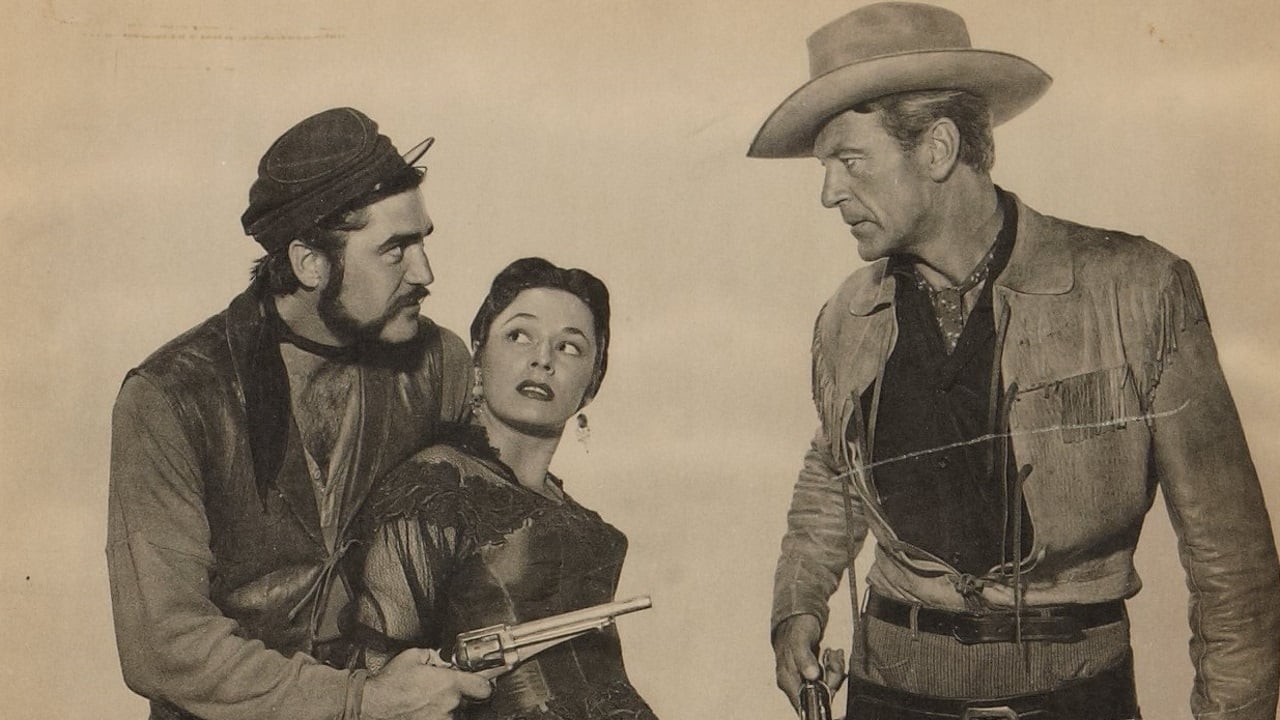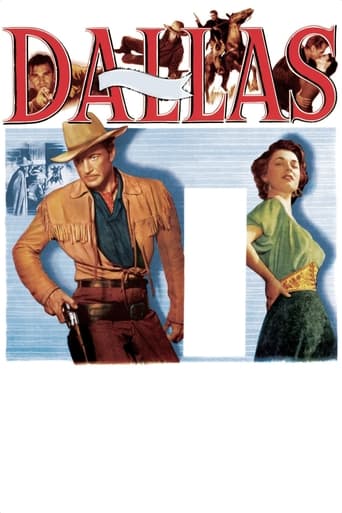RyothChatty
ridiculous rating
Spidersecu
Don't Believe the Hype
Huievest
Instead, you get a movie that's enjoyable enough, but leaves you feeling like it could have been much, much more.
Gurlyndrobb
While it doesn't offer any answers, it both thrills and makes you think.
vincentlynch-moonoi
Interesting the wide range (no pun intended) of reviews here. As for me, I think it's a better-than-average Western (a genre that I rarely watch anymore), though clearly not one of the great Westerns. There are parts of the film, particularly early on, where there is a bit of tongue-in-cheek humor that is enjoyable.The story line is that after the Civil War, a rebel (Gary Cooper) is looking for revenge against a group of carpetbaggers who burned his family to death when they destroyed their Georgia plantation. Cooper meets up with Leif Erickson, an Eastern dandy who has somehow been appointed a federal marshal...even though he can't even shoot a gun. Cooper assumes the role of federal marshal, and Erickson becomes his deputy. Erickson is in love with a Mexican woman beautifully played by a lovely Ruth Roman...who of course then falls for Cooper. Nevertheless, Erickson comes to admire Cooper and gets him a pardon while they work together to bring an end to the carpetbaggers, headed by Raymond Massey. Gary Cooper is at the top of his form here playing the sort of anti-hero. Raymond Massey is nicely evil...as he often was in films. Leif Erickson -- never a favorite of mine -- is very good here, subtly playing a spurned lover who remains a mostly good guy.As I mentioned earlier, this is not one of the great Westerns, but it is darned good.
jarrodmcdonald-1
The cast is perfectly chosen, and Warners' Technicolor production values are top-notch. It's one of Gary Cooper's best westerns of the 1950s, and that's saying a lot, because he made several good ones during this particular decade. What works so well is the interplay between Cooper and Leif Erickson who play men on opposites sides of the law that switch places. The story isn't as contrived as it sounds, and there is some excellent humor in the situations the performers mine like gold, without overplaying. Ruth Roman was never photographed more beautifully than she is in this picture, and it's easy to see why two strong-willed men would be vying for her attention. Raymond Massey is on hand as the villain, and this time he enacts wicked schemes with an equally villainous younger brother (Steve Cochran). Cochran's role is written with less comedy than the others, but even he manages to bring out the more humorous aspects of his character's situation without being too gimmicky. There are several brilliant sequences, but perhaps the best one involves Cooper, Cochran and a black cat on a nighttime street that leads to a killing.
mark.waltz
Long before J.R. Ewing and some football cheerleaders made this Texas city popular, there was this colorful Warner Brothers western starring one of the greatest action heroes of Hollywood's golden age. Cooper plays a man wanted for arson who disguises himself as a marshal to unleash the real culprit. He convinces the actual marshal (Steve Cochran) to let him take over his identity and in the process, wins the love of Cochran's Mexican sweetheart (Ruth Roman). In going after the bad guys, he comes up against Dallas's most powerful citizen (Raymond Massey in a masterful performance) and taunts the bad guys in an explosive climax.If the idea of Ruth Roman playing a Mexican doesn't make you laugh (it seems that any dark haired beauty could be cast in Hispanic parts in this era) how about platinum blonde cult actress Barbara Payton as the wife of one of the bad guys and a group of actors who are supposed to play Texans but sound nothing like them? Two years before his Oscar Winning role in "High Noon", Cooper played a variation of the same role, and in studying the two films, you really can see the difference as to what makes a film tense ("High Noon's" clock is as much of a character as the human beings in the film, while "Dallas" has little or no tension at all) and what makes it simply routine. If it wasn't for the color photography or the presence of its cast (Cooper, Massey and Reed Hadley as Wild Bill Hickock), this could have drifted into the hundreds of "B" westerns of the time, entertaining in their own right but basically forgettable.
Robert J. Maxwell
Stylized Hollywood Westerns, full of familiar conventions, seem to have eternal life and this is an avatar. Everything in it seems to have been scraped out of the back of a drawer from 1939, a larger budget applied, and this production its issue.Gary Cooper has played this sort of role dozens of times -- the displaced Southerner, fast on the draw and firm with honor, though kinda easy going whenever possible. He plays Blayde Hollister who travels to Texas looking for the gang who destroyed his cotton plantation. He wears a buckskin-fringed shirt and packs two ivory-handled six shooters. He speaks with a countrified accent -- "A feller could get hurt doin' this." (Cf., "Sergeant York.") The gang is led by sneering Raymond Massey, who buys and sells land, usually by underhanded means whenever possible. The gang includes Steve Cochran, who cannot play a Westerner though he's very good at scum bags in general. The requisite woman is Ruth Roman, daughter of the Mexican plantation owner, who looks and speaks about as Mexican as a Boston brown betty.I don't think I'll bother too much with the plot. No doubt someone has gone into it in some detail and it's not worth much more mention. As in any 1939 Western, it's labyrinthine. Everyone except Cooper and his friends are underhanded and there are multiple double crosses and switched identities and hidden secrets.Everything is retro. The plot, the dialog, the wardrobe, even the music. The score is by Warner's stalwart Max Steiner. He's the guy that scored "King Kong." That was 1932. This movie was released in 1950.Cooper's name, by the way -- "Blayde Hollister" -- prompted me to look through the records of the RACA -- the Real American Cowboy Associaton -- to see if that name cropped up in their archives, which date from the beginning of time to February 4th, 1911, when the last Real Cowboy passed away due to an unfortunate encounter with a deranged peccary. There has never been a Real Cowboy with the name Blayde. Hollister, yes, but not Blayde. As a matter of fact, there is no record of any Real Cowboy named Wade, Luke, Cole, or Matt either. The most popular names for genuine cowboys, in descending order of frequency, were Clarence, Mortimer, Noble, Nebukadnezzar, Plautus, Pinchbeck, and Hortense.If this movie had been released in 1939, it would have been routine. In 1950, it is a calamitous monument in the history of human recycling.

